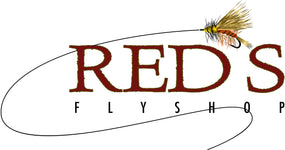CALL NOW (509) 933-2300
CALL NOW (509) 933-2300

It's probably no "hot tip" that boulders are a good place to target when fishing a river, but do you know how to look for a slick? Boulders break up the current and provide both cover and feeding opportunity. For me however, I fished boulders incorrectly for a long time. It wasn't until after I was guiding for some time that I inadvertently discovered the value of identifying the "slick" or the "rolling glass" downstream from a boulder. Now it's one of my go-to spots on any river, any where.
First off, there are an infinite number of boulders and how you fish them will change with rate of river flow, depth, size of boulder, water temperature, and your setup. We'll chat about some of the other scenarios or ways to approach a boulder later on. Today let's focus exclusively on what we often call a "slick".
A boulder slick is the water directly downstream of the boulder, between the two riptides going around each side, and is an area of relative calm. It's marked by having a glassy or slick surface that isn't choppy or whitewashed like most of the surrounding water. I love fishing slicks. It's just that point below the rock that the swirls, ferocity, and whitewash settles out and begins to flow with control. Trout love stability. They don't like getting washed round and constantly working to maintain their position. They will hold in crazy boils or swirls at times, but out of 24 hours in a day we most commonly find them in more stable holding lies.
A slick is stable, and can be found anywhere from 1' below a boulder in small pocket water, or 50' below a big giant boulder in a big river. Look for the rolling glass, consider a high sticking tactic to keep your line off the swirly riptides, and focus on that glassy calm area. Short line nymph rigs work great here because the swath of good water is often so narrow! At times its only 12" wide and if you are out of it, the trout isn't moving from it's happy place in the soft water and darting out into the quick flows on the edges. A hopper-dropper combo with a Tungsten Beadhead Nymph is excellent for most slicks. This light setup seems to hover in there better than most traditional indicator rigs.
Watch this video and give the slick a try next time you are on the water!
